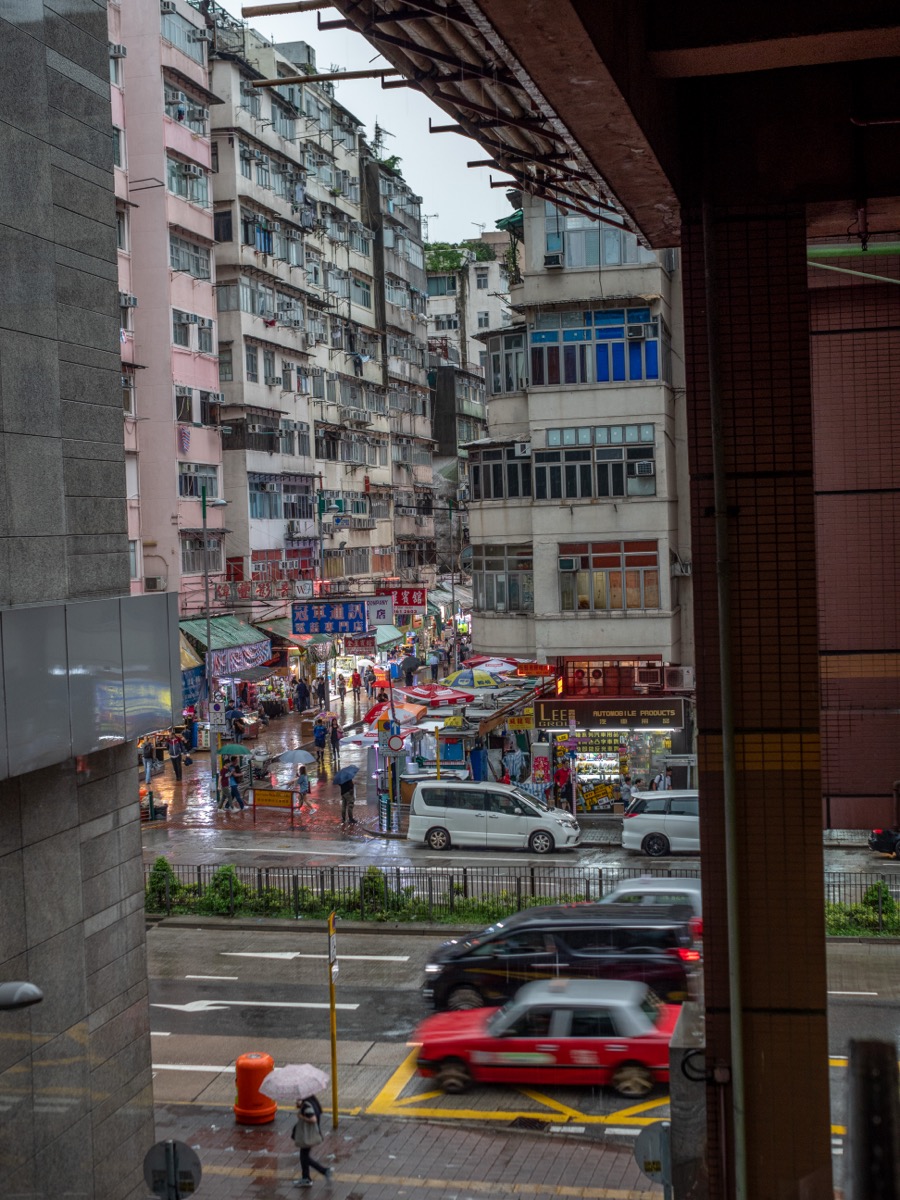A Neighborhood Rooted in Working-Class History
Sham Shui Po (深水埗), in northwest Kowloon, was historically an industrial and working-class district. It still retains this popular and dense atmosphere, with narrow alleys, street markets, and intense community life.
It is also an important place in Hong Kong’s migration history, where families from mainland China settled for decades.
Street Markets and Recycling Culture
Sham Shui Po is one of the best places to explore themed markets:
- Apliu Street: second-hand electronics, cables, phones, small items, gadgets.
- Yu Chau Street: haberdashery, threads, fabrics, sewing supplies.
- Ki Lung Street: textiles by the meter and fabric materials.
- Pei Ho Street: wet market with local fruits, fish, and vegetables.
This area is also known for its “do-it-yourself” culture, repair, and recycling.
An Emerging Creative Scene
For about a decade, Sham Shui Po has also attracted creators, designers, and independent cafés:
- Alternative fashion shops using local fabrics.
- Coworking spaces and design workshops.
- Artisan cafés nestled among old buildings.
- Heritage rehabilitation projects, like the Jockey Club Creative Arts Centre (JCCAC), a former industrial building turned cultural center.
This blend of traditional craftsmanship and contemporary creation gives the district new vitality.
History and Memory
Sham Shui Po hosts several historic sites related to Hong Kong’s social history:
- Mei Ho House: a former social housing building restored today as a museum and youth hostel. It shows the evolution of working-class housing in Hong Kong.
- Sham Shui Po Camp (now gone): former refugee camp, then Japanese internment camp during WWII.
These places remind us of the human and fragile dimension of the city’s rapid development.
Atmosphere and Daily Life
What strikes in Sham Shui Po is the intense and chaotic street life:
- Queues in front of traditional restaurants.
- Old neon signs still lit.
- Improvised stalls on sidewalks.
- Small Taoist temples wedged between buildings.
It’s a glimpse of popular, multigenerational Hong Kong, often absent from tourist routes.
Visiting Sham Shui Po
- Access: Sham Shui Po MTR station (Tsuen Wan line).
- On foot: best discovered wandering without a fixed route.
- Recommended: bring a camera to capture the atmosphere and an adventurous appetite for street food.
Conclusion
Sham Shui Po is the real city, in all its density, creativity, weariness, and human warmth. It’s a neighborhood to live in rather than just visit, a place where social history and contemporary energy overlap daily. A space to see Hong Kong from the inside, without artifice.
From Dragon Centre
